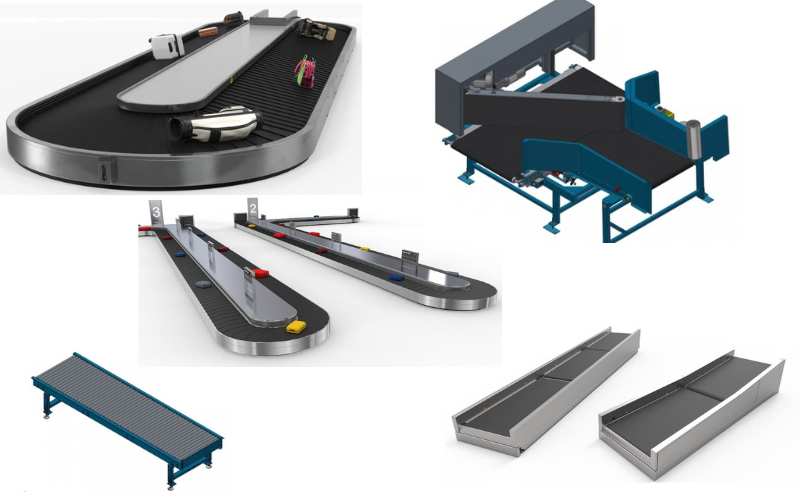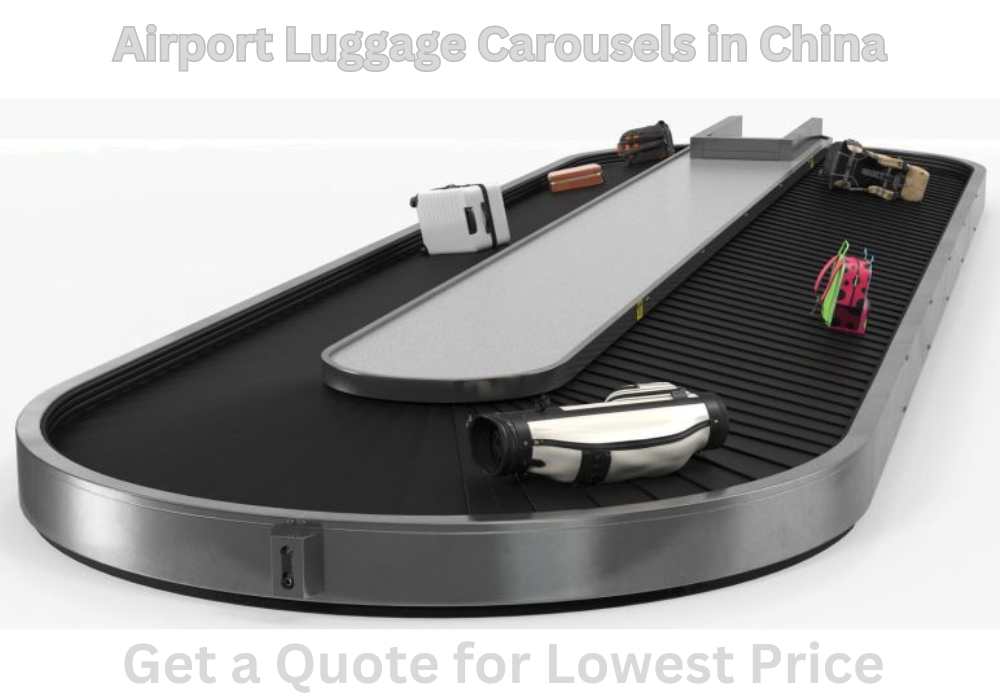Exploring Baggage Handling Systems (BHS) in China in 2025
China’s aviation industry is booming. With passenger numbers skyrocketing, airports across the country are facing the challenge of efficiently managing the ever-increasing flow of luggage. This is where baggage handling systems (BHS) come in – the silent heroes behind a smooth passenger experience.
In this comprehensive exploration, we’ll delve into the world of BHS in China, examining the different types of systems, the latest technological trends, and how these marvels of engineering are shaping the future of airport logistics in the country.

A Look at the System
Imagine a complex network of conveyor belts, sorters, and screening machines working in perfect harmony. That’s the essence of a BHS. These systems handle everything from check-in to baggage claim, ensuring your luggage arrives safely and efficiently at its destination.
BHS components play a crucial role in this intricate dance:
- Baggage sorting system: The heart of the BHS, it sorts checked luggage based on its final destination.
- Conveyor belt system: These belts transport luggage throughout the airport, from check-in counters to sorting areas and ultimately to the baggage claim carousel.
- Tilt trays: These angled trays divert luggage onto specific conveyor belts based on their sorting codes.
- Baggage claim: This is where passengers collect their luggage after arriving at their destination.
- Baggage tracking: This technology allows passengers to monitor the location of their luggage throughout their journey.
BHS manufacturers in China are constantly innovating, developing cutting-edge systems that cater to the specific needs of the country’s rapidly growing airports.
Unveiling the Different Types of BHS Systems
Not all BHS are created equal. Here’s a breakdown of the two most common types:
- In-line systems: These traditional systems use a series of conveyor belts and sorters to move luggage from check-in to baggage claim. While reliable, they can be less efficient for handling large volumes of luggage.
- Sortation systems: These advanced systems utilize sophisticated algorithms and automated sorting technology to efficiently route luggage to its final destination. This is particularly beneficial for large airports with high passenger traffic.
Early Baggage Storage (EBS) is another innovative solution gaining traction in China. This system allows passengers to check in their luggage hours or even days before their flight, freeing up congestion at check-in counters and improving the overall passenger experience.
BHS Trends Shaping the Future
The BHS landscape in China is undergoing a significant transformation driven by advancements in technology. Here are some key trends to watch:
- Automation: Robots are taking over repetitive tasks within the BHS, leading to increased efficiency and reduced reliance on manual labor.
- Artificial intelligence (AI): AI-powered systems are being used to optimize baggage routing, predict potential bottlenecks, and improve overall BHS performance.
- Internet of Things (IoT): By integrating sensors and intelligent devices, BHS can collect real-time data on luggage location and status, enabling better tracking and proactive problem-solving.
These technological advancements not only improve efficiency but also contribute to:
- Enhanced passenger experience: Shorter wait times at baggage claim and improved baggage tracking capabilities lead to a smoother and more stress-free travel experience.
- Increased security: Advanced screening technology ensures luggage safety and compliance with IATA baggage standards.
- Reduced operational costs: Automation and improved efficiency lead to lower labor costs and energy consumption.

BHS Innovation in Action
Let’s take a closer look at how some Chinese airports are implementing these BHS trends to enhance their operations:
Shenzhen Bao’an International Airport: This airport boasts a state-of-the-art BHS featuring an Independent Carrier System (ICS). This innovative system uses individual carriers to transport luggage, eliminating the risk of jams and ensuring smooth, high-speed sorting.
Qingdao Jiaodong International Airport: This airport’s BHS utilizes a massive lane-based BAGSTORE storage facility. This allows for efficient storage and retrieval of luggage, particularly during peak travel times.
These are just a few examples showcasing the innovative spirit driving the BHS revolution in China.
The Importance of BHS Maintenance
Even the most advanced BHS require proper maintenance to function optimally. Regular inspections, preventative maintenance, and readily available spare parts are crucial to ensure smooth operation and prevent costly downtime.
BHS maintenance practices in China are becoming increasingly sophisticated, with many airports employing predictive maintenance techniques that identify potential issues before they escalate into major problems. This proactive approach ensures the BHS remains reliable and efficient, minimizing disruptions to airport operations.
Get a Quote from Top 6 Global Leader BHS Manufacturers
FAQs
What are the different types of BHS systems in China?
In-line systems are traditional, using conveyor belts. Sortation systems are more advanced, using AI and automated sorting for faster luggage handling at busy airports.
How do new BHS technologies improve the passenger experience?
Automation and AI in BHS lead to shorter waiting times at baggage claim and better tracking capabilities, making the travel experience smoother and less stressful.
What are the benefits of BHS for airports in China?
BHS advancements like Early Baggage Storage (EBS) reduce congestion at check-in counters. Automation and improved efficiency also lead to lower operational costs for airports.





